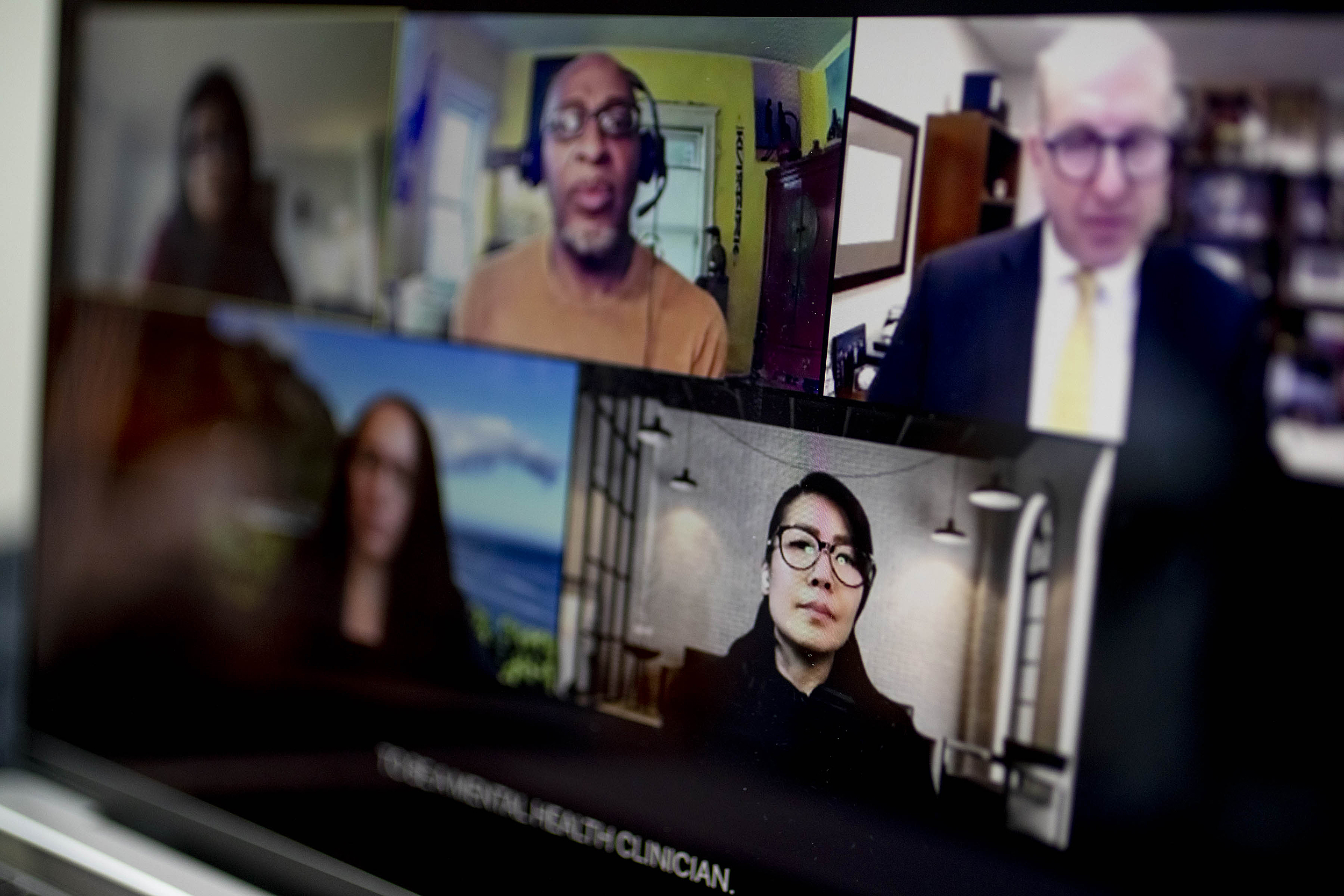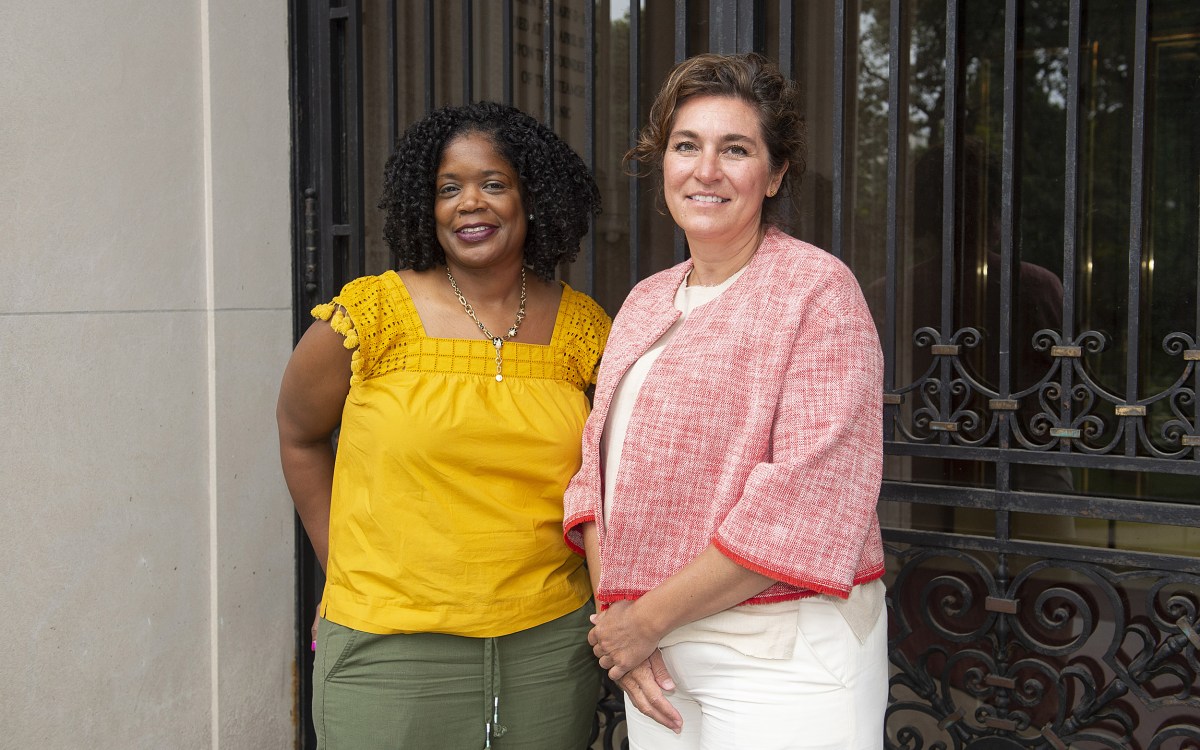
Campuses need to better serve those students’ needs during the pandemic and going forward, say a panel of experts.
Rose Lincoln/Harvard Staff Photographer
COVID’s triple whammy for Black students
More risk of physical, psychological damage, less access to health care unevenly tip scales
College students of color not only face a disproportionate risk of contracting COVID-19, they are particularly vulnerable to its psychological damage — especially when the longtime struggle against inequality and the current financial crisis are factored in, according to speakers at a virtual Harvard forum.
Phillip Martin, a senior investigative reporter at the GBH News Center for Investigative Reporting and the moderator of “Innovating on Campus: Supporting Mental Health of Students of Color During COVID-19 and Beyond,” said those students “are facing pressures and stresses like never before. And at the very same time they’ve lost access to many of the systems that are in place to help support students’ mental health.”
Speakers at Tuesday’s event, presented by the T.H. Chan School of Public Health in partnership with The Steve Fund and GBH News, said campuses need to better serve those students’ emotional needs during the pandemic and going forward.
“This time has been particularly challenging for first-generation, low-income students of color,” said Pace University President Marvin Krislov, “whether it’s through the illness, the availability of technology, social justice questions, financial challenges, and also the sense of community, which can be much more challenging in a remote environment. We know we need to … commit as an institution and as a community to reaching out and making sure that students have the support they need.”
Meeta Kumar, director of student counseling at the University of Chicago, said that while “all students are struggling with pandemic-related stressors such as isolation and fatigue, there are additional variables that impact mental health of [people of] color and marginalized communities.”
“We are seeing a wide range of mental health concerns,” she said, such as amplified stress, anxiety, depression, grief, and trauma. “The impact is disparate across different communities.”
Black students, for instance, “experience longstanding racial trauma oftentimes and are experiencing heightened feelings of anger and urgent needs to take on issues of activism,” while Latinx students “often first in their families, have additional responsibilities to care for family members,” Kumar said.
Tabbye Chavous, professor of education and psychology and director of the National Center for Institutional Diversity at the University of Michigan, said students of color are most likely to report negative campus-related experiences such as feeling unvalued or unwelcome, with variations among different racial and ethnic groups.
Chavous said understanding those experiences can help colleges address them. However, she said, “The intersections of racial unrest, COVID, and economic crisis makes these challenges greater.
“As institutions move to remote and hybrid … learning, they still must be accountable for attending to new and different ways that students of color may experience the campus and the racial climate,” like offensive comments posted on online learning platforms.
Noting that many students of color “draw on their racial cultural identities and their communities as a source of strength and resilience,” Chavous added that institutions during COVID also need to be creative in supporting cultural learning and community-building opportunities.
More like this
Josephine Kim, lecturer on education, prevention science and practice/CAS in counseling programs at the Harvard Graduate School of Education, listed some examples of structural racism.
“Students of color don’t see themselves reflected on the walls they have to navigate, in the curriculum, in the authors who wrote the materials they have to read for class … and the food that’s in the cafeteria,” Kim said. Such experiences “point to a lack of inclusion and pose a threat to [their] mental health.” those students.
Implicit or unconscious bias, microaggressions, and stereotyping are other contributors, Kim said. Another is social exclusion, including those who “stay silent” for the sake of others.
“That absence of helping is the new discrimination,” she said.
Kumar said investing more in support services is one way institutions can support the mental health needs of students of color. She also recommended offering options for students needing services, creating a campus-wide network to support them, and creating “adequate messaging” to let students know how to seek help.
Chavous said faculty members can be part of the solution if institutions better educate them about “the role they play in creating a more inclusive environment” and about the services to which they can steer students. Institutions can also support and incentivize faculty who engage with the issue, she said.
“I think part of it is making sure that it’s not stigmatized to seek help for mental health and well-being,” Krislov said. Also important, he said, is ensuring “the institution embraces the notion that supporting students’ mental health is part of our mission … part of what we give to the community.”







